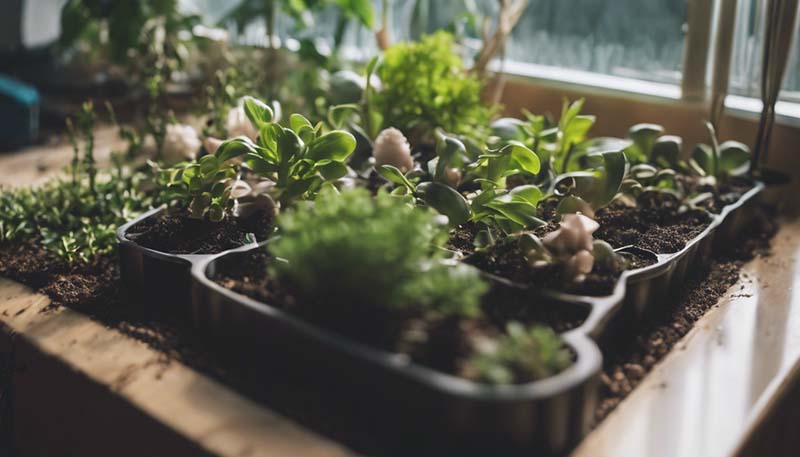Indoor Gardening: The Benefits of Using Self-Watering Systems
Indoor gardening has become increasingly popular as a way to bring nature indoors, improve air quality, and enjoy the therapeutic benefits of caring for plants. However, keeping indoor plants healthy and hydrated can be challenging, especially for those with busy schedules. This is where self-watering systems come into play, offering a range of advantages for both novice and experienced gardeners alike.
Consistent Moisture
The primary benefit of a self-watering system is its ability to maintain consistent moisture levels in the soil. Overwatering and underwatering are common issues that can lead to plant stress or even death. Self-watering systems help prevent these problems by providing a constant supply of water to the roots, allowing plants to thrive in a stable environment.
Advertisement
Reduced Maintenance
With a self-watering system in place, the need for frequent manual watering is significantly reduced. This is particularly beneficial for those who travel frequently or simply forget to water their plants. The systems can be set up to water the plants at specific intervals, ensuring that the plants receive the right amount of water without the need for daily attention.
Improved Efficiency
Self-watering systems are designed to minimize water waste. Traditional watering methods can lead to runoff and evaporation, which wastes water and nutrients. In contrast, self-watering systems use water more efficiently, as it is delivered directly to the root zone where it is needed most. This not only saves water but also ensures that the plants receive the necessary nutrients for growth.
Better Aeration
Many self-watering systems incorporate features that improve soil aeration. Proper aeration is essential for root health, as it allows oxygen to reach the roots and encourages the growth of beneficial microorganisms. A well-aerated root zone can lead to stronger, healthier plants that are better able to resist diseases and pests.
Versatility
Self-watering systems are available in various types and sizes, making them suitable for a wide range of indoor plants, from small succulents to larger potted trees. Some systems are designed for individual pots, while others can accommodate multiple plants, making them a versatile choice for any indoor garden.

Increased Plant Health
Consistent watering and improved aeration contribute to overall plant health. Healthy plants are more resistant to pests and diseases, and they also grow faster. Self-watering systems can help gardeners achieve a lush, thriving indoor garden with minimal effort.
Types of Self-Watering Systems
There are several types of self-watering systems available, each with its own set of advantages:
Wicking Systems
Wicking systems use a wick, or a piece of absorbent material, to draw water up from a reservoir to the plant's root zone. These systems are simple, effective, and well-suited for small plants and seedlings.
Reservoir Systems
Reservoir systems consist of a water reservoir connected to the plant container. The water level in the reservoir is maintained manually or automatically, and the soil wets from the bottom up, ensuring even watering.
Capillary Mats
Capillary mats are made of a material that draws water up from a reservoir through capillary action. These mats can be placed under the plant pots, and the plants' roots can access water as needed.
Drip Irrigation Systems
Drip irrigation systems deliver water directly to the root zone via a network of tubes and emitters. These systems can be automated and are ideal for larger indoor gardens or for plants with specific watering needs.
Conclusion
In conclusion, self-watering systems offer numerous benefits for indoor gardeners. They provide a reliable and efficient means of watering, reduce the need for manual intervention, and promote healthier plant growth. Whether you're a busy professional or simply looking to enhance your indoor gardening experience, a self-watering system is a worthwhile investment.
Remember to choose the right system for your specific needs and the types of plants you are growing to maximize the benefits of indoor gardening.
Comment